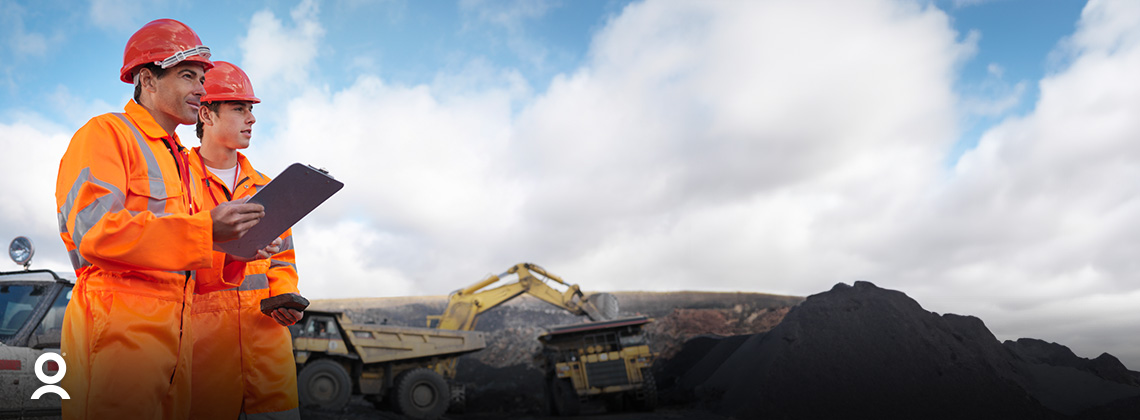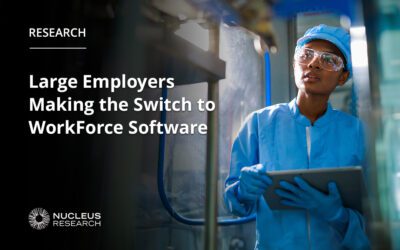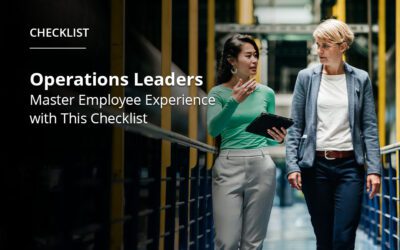The Future of Modern Workforce for Mining – 5 Strategies for Workforce Transformation

The mining industry has always been recognized for technological innovation and transformation. However, mining leaders have reached a critical moment as they look towards their ongoing future success and growth in a highly competitive and complex regulated environment.
The State of Mining Report 2023 reveals the challenges and opportunities mining leaders face today and key insights on how to cultivate a better working environment for their employees and optimize performance.
The State of Mining Report 2023
See firsthand insights and lessons from influential global mining leaders around their values and approach towards building a modern workforce.
5 Strategies for Mining Workforce Transformation
Mining leaders must consider how they can find the right balance between meeting the needs of their workforce and continued transformation of technology, sustainability, and equity. Here are five key considerations for mining leaders when it comes to bridging the gap between employee experience and business growth and success:

Make Modern Work Flexible
The normalization of remote and hybrid work has made flexible work arrangements a top priority for many workers, especially “deskless” workers—those who perform their primary responsibilities on-site and away from a conventional work desk. As such, new technologies must be adopted to accommodate modern working arrangements, especially in mining, where distances between worksites can be vast. This necessitates building the right facilities, structures and policies to make this flexibility possible for everyone.
“Technology really has improved the employee value proposition for the mining sector as it has given us much greater work flexibility and diversity in who can participate in the workforce.”
– Danielle Martin, Director, Social Performance, International Council on Mining and Metals (ICMM)

Elevate Talent Management
Learning management systems and platforms must be implemented to address the skills gap alongside talent targeting programs for all workers, from deskless to office employees. This requires that organizations provide sufficient mentoring, training, upskilling, and networking opportunities whilst also enabling flexible learning to maximize worker development.
“There is a huge focus on new energy and defining the organizational capabilities required to effectively deliver energy transition. This requires leveraging existing skill sets in the ageing workforce and developing depth in the younger workforce to continue in this transition.”
– Manson Kan, Senior Manager Human Resource Systems and Planning, Woodside Energy

Develop the Right Change Mindset
Communication is vital for the facilitation of effective change management, as mining operations are not simply focused on processes but also on people. While new technologies and processes can be adopted, full efficacy will not be achieved without proper change management policies in place to ensure that workers are on the same page. Leadership must understand the value of having the right change management to maintain sustainable progress.
“Mining is a people business, and knowing how you get people to do things differently and how you can leverage that across your organization is something that we need to improve on.”
– Michelle Ash, Technology Executive, OZ Minerals

Environmental, Social, and Governance (ESG) Standards Cannot Be an Afterthought
As the mining industry transforms and grows, investors, communities, and governments must work together and change their perspectives. Industry leaders need to take notice and find a way to prevent or address some of the root causes of ESG issues. This extends beyond the environment. Good governance and progressive company policies must be in place to ensure that workers are aligned and engaged, able and ready to help drive ESG agendas.
“Mining is a key facilitator of the green economy, particularly green energy, because many of those technologies require nickel, cobalt and rare earth metals. People don’t seem to have made that connection yet, and I’m not sure if this is something that we’re communicating enough as an industry: that we are critical to the transition of economies to a greener state.”
– John Hill, Vice President Talent Management and Human Resources Systems, Torex Gold Resources

Diversity Must be Embraced
Diversity, equity and inclusion are critical factors today. It is important to ensure workers are treated fairly and given a fair opportunity. This means addressing issues like sexual harassment, implementing more inclusive policies for workers of different backgrounds and adopting gender-neutral processes. Leaders must develop the right sensitivities to effectively manage a culturally and geographically diverse workforce.
“Along with policy changes, recruitment and talent management may have to change to address diverse needs, including reevaluating selection criteria and interview questions.”
Tania Constable, Chief Executive Officer, Minerals Council of Australia (MCA)
Crafting Better Experiences for Mining Employees
By making modern work flexible, elevating talent management, developing the right change mindset, embracing ESG, and promoting diversity, mining leaders can create a workplace that is both productive and fulfilling for their employees. This, in turn, will lead to a more sustainable and successful mining industry for all.
In addition to the strategies mentioned above, mining leaders should also consider the following:
- Invest in employee well-being. This includes providing access to healthcare, mental health resources, and opportunities for physical activity.
- Create a culture of trust and respect. This means listening to employee feedback, valuing their contributions, and creating a safe and inclusive workplace.
- Empower employees to make decisions. This gives employees a sense of ownership and responsibility, which can lead to increased productivity and engagement.
- Celebrate employee successes. This shows employees that their work is valued and appreciated.
By taking these steps, mining leaders can create a workplace that is not only productive, but also fulfilling for their employees. This will lead to a more sustainable and successful mining industry for all.
To learn more strategies for improving employee experience in the mining industry, read the 2023 State of the Mining Industry, prepared in partnership with SAP SucccessFactors and Manning & Co. This report is your key towards finding inspiration to optimize your most valuable asset—your global workforce.
Subscribe to The WorkForce Blog
Learn the art and science of maintaining productive, happy, engaged employees.
Discover More
Nucleus Insights from WorkForce Customers Research Note
Nucleus Research interviews WorkForce customers who validate why we’re ranked the #1 WFM enterprise vendor for 10 consecutive years.
Elevate Employee Experience: Checklist for Operational Leaders
Get the practical steps and technology functionalities operation leaders need to improve their employees’ work experiences.
Streamlining Complex Workforce Compliance Requirements Boosts Productivity
Discover how workforce compliance software helps EMEA organisations navigate complex legislation, enhance compliance and boost operational efficiency.



